News
Review: "Architecture of Life at BAMPFA" My take on the extravagantly poetic exhibition curated by Larry Rinder to open the new Berkeley Art Museum and Film Archives, published on Square Cylinder, February 2016.
Category Archives: Art Writing
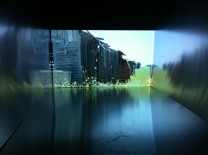
Electrified Air and Fuchsia Skies
In the country, highway sounds can make you feel insignificant. The speed with which vehicles pass you by insists that the life worth paying attention to is somewhere else. It was that distant zoom that I heard on entering Christina … Continue reading
Posted in Art Writing
Tagged Adam Lerner, Christina Battle, climate change, Continental Drift, Jeanne Liotta, MCA, video installation
Comments Off on Electrified Air and Fuchsia Skies
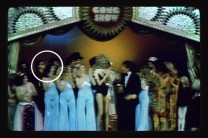
Credit Where Credit is Due, Part II
When computer scientists Jon Kleinberg and Sigal Oren came up with a theoretical model showing that assigning credit unfairly resulted in the most productive creative community, they were thinking about individual scientists and credit in the form of prizes, high-status … Continue reading
Posted in Art Writing
Tagged Getty, Jon Kleinberg, Pacific Standard Time, Sigal Oren, State of Mind, Tony Labat, Under the Big Black Sun
Comments Off on Credit Where Credit is Due, Part II
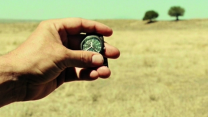
An Unfair Fight: The Clock, Clutch, and a Chainsaw
The slanting light gives our sheer curtains a sheeny glow, although the fabric is matte. Outside the air is both warm and cool, just a touch hot in the sun but pleasant wherever there is shade. It is late on … Continue reading
Posted in Art Writing
Tagged attention, Christian Marclay, State of Mind, Terry Fox, The Clock, time, video art
Comments Off on An Unfair Fight: The Clock, Clutch, and a Chainsaw
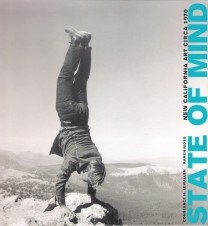
Does Credit Go Where Credit Is Due?
Right now someone is destroying art. Clearing out a studio, a house, or a storage unit and pitching art into the trash. This isn’t necessarily a bad thing, but the factors that determine which art escapes, which artists receive credit … Continue reading
Posted in Art Writing
Tagged Constance Lewallen, Jon Kleinberg, Karen Moss, Pacific Standard Time, Paul Kos, State of Mind
Comments Off on Does Credit Go Where Credit Is Due?
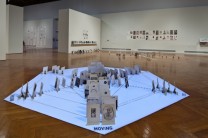
Size Matters: Sonya Rapoport
Our scale—our size in proportion to our environment—is something most of us don’t think about. After we’re grown, our size is a given; such a constant factor that we don’t notice how it underpins a sense of self, or wonder … Continue reading
Posted in Art Writing
Tagged installation, interactivity, Mills Museum, patterns of thought, scale, Sonya Rapoport
Comments Off on Size Matters: Sonya Rapoport
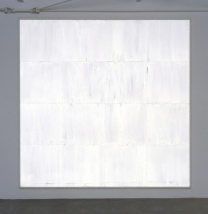
Pacific Standard Time I: Mary Corse
Photography fails me The photograph you see here captures nothing—nothing—of what makes Mary Corse’s paintings worth your time. Photographs of her work are poor, dead things, confounding the truism that a picture is worth a thousand words. Showing you this … Continue reading
Posted in Art Writing
Tagged Ace Gallery, Billy Al Bengston, Craig Kauffman, Crosscurrents, Getty, Judy Chicago, Larry Bell, LIght and Space, Los Angeles, Mary Corse, Pacific Standard Time, Phenomenal, Robert Irwin
Comments Off on Pacific Standard Time I: Mary Corse
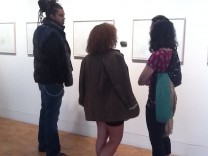
What We Talk About When We Talk About Art
If you hang out in an art school, you hear lots of talk about “art as discourse.” It’s a thought that is almost worn out, yet ideas become commonplace because they are apt. And sometimes an artist can extract a … Continue reading
Posted in Art Writing
Tagged Anjan Chatterjee, Antonio Damasio, Axel Seemann, Inge-Marie Eighsti, joint attention, Michael Tomasello, Robin Hill, San Francisco Center for the Book, Ulla Warchol
Comments Off on What We Talk About When We Talk About Art

Reading Other Minds, Part II
It has been shown, by thinkers such as Donna Haraway and Sarah Blaffer Hrdy, that opining about human nature on the basis of primatology research is an excellent way to reveal your deepest, darkest, most unflattering beliefs about human existence.
Posted in Art Writing
Tagged Alex Bag, Deborah Forster, Donna Haraway, Geoff Dyer, Jayson Musson, Rachel Mayeri, Sarah Blaffer Hrdy, Sarah Thornton, Tom Marioni
Comments Off on Reading Other Minds, Part II

Reading Other Minds, Part I
I’ve found Rachel Mayeri’s Primate Cinema captivating ever since I saw the first video in the series, Baboons as Friends (2007). The questions she tackles—questions about our human nature, our place in the world, and how we explain the world to ourselves—seem so fundamental, … Continue reading
Posted in Art Writing
Tagged apes, Arts Catalyst, chimpanzees, Deborah Forster, Donna Haraway, Edinburgh Zoo, Jane Goodall, Primate Cinema, Rachel Mayeri
Comments Off on Reading Other Minds, Part I
